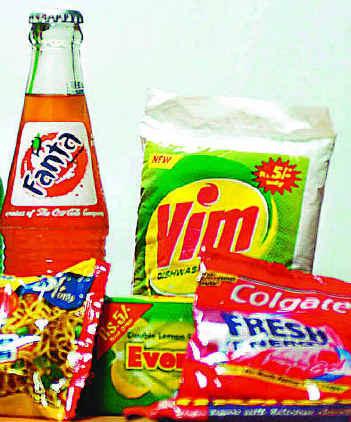Saturday, March 29, 2008
same old storey
Considering that the apparel and lifestyle retail format, Shopper’s Stop is one of the oldest players in Indian retail, BS Nagesh and his team can feel a sense of achievement. But the oldest network also brings a rider along — that Shopper’s Stop has the largest number of old stores. This for the team is a matter of concern because in addition to launching new stores across new regions, the old stores also need a boost from time to time. Currently, there are four stores under revamp across Delhi, Hyderabad and Bangalore. “If you open three or four stores a year, they look newer and your first 20 stores look older. So in your own generation, yesterday’s business looks extremely old,” says B S Nagesh, CMD, Shopper’s Stop. While one can see the thought behind the revamp of older stores within Shopper’s Stop network, it’s only 18 months since the Croma store at Juhu opened for business and already changes are in the offing. Not because footfalls or per square feet realisation is dropping, but the idea here is to create a more customer friendly environment. “When sales are good, the normal logic is don’t touch it. But in the last 18 months, we have studied customer traffic. Based on what we found out, we have decided to incorporate some changes,” explains Ajit Joshi, CEO, Infiniti Retail. The retailers today are doubling up as cosmetic surgeons undertaking elaborate makeover sessions. The intervention has been necessitated by worries about same store sales, a phenomenon which has hit the Indian retailing market. As players are leapfrogging the retail curve and aggressively expanding, they are faced with shorter retail lifecycles on older stores. Globally, average retail life cycles are six to seven years but Indian modern retailers have been forced to re-invest in old stores by the third year on account of the rapid pace of expansion. Same store sales are generated only by establishments that have been open more than a year and give a clear sense of how the industry is really performing. It is crucial since the older stores bring in most of the business until newer ones consolidate their position. Globally , the same stores metrics are used to measure the health of the business and are also a trademark of the health of the economy particularly in countries with a developed retail environment. It’s this phenomenon which is keeping Salil Sahu, CEO, Home Stores India, which runs Sabka Bazaar in the North on his toes despite a complete revamp recently. Home stores, part of Wadhawan retail holdings, acquired Sabka Bazaar in July 2007. Post acquisition, the company revamped all 30 existing stores while adding new ones to its fold. Six months into business, old store sales have grown by 50%, while footfalls grew by 70%, says Sahu. “A reasonable timeframe can be four years before a major overhaul is undertaken , but changes are taking place in all directions , from cost pressures , competition to shopper behaviour. Thus one needs to constantly monitor the need for incremental changes from time to time,” he explains. Industry estimates indicate the retailers target between 5% and 15% same stores sales growth depending on inflation and shape of the economy. India however is witnessing erratic behaviour. Considering the nascent stage, the growth should be increasing consistently. However, studies reveal that while stores do better in the first year, the second year witnesses a drop. Hemant Kalbag, principal - consumer & retail practice, AT Kearney believes the drop is more to do with the novelty factor associated with a store. Since retail is a new phenomenon , barring big metros, most catchments haven’t got exposed to modern trade.
Subscribe to:
Post Comments (Atom)





No comments:
Post a Comment